
Become a member
Join today and help protect nature, beauty and history – for everyone, for ever. Enjoy access to more than 500 places with National Trust membership.
A magnificent 17th-century house displaying one of the finest art collections in the care of the National Trust, nestled in a 700-acre deer park
Petworth House and Park, Petworth, West Sussex, GU28 9LR
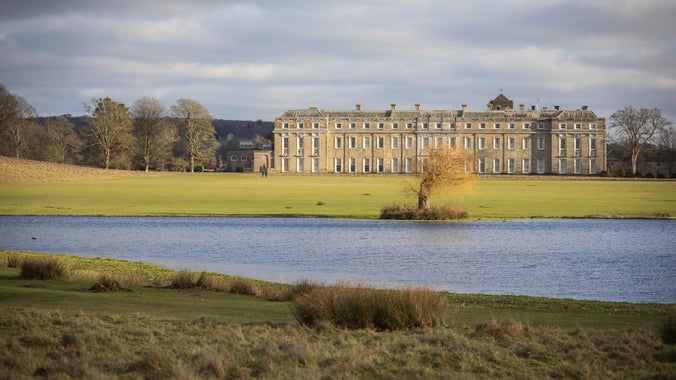
| Asset | Opening time |
|---|---|
| House | 10:30 - 16:30 |
| Deer Park | 08:00 - 18:00 |
| Pleasure Garden | 10:00 - 17:00 |
| Shop | 10:30 - 16:30 |
| Historic Kitchens | 10:30 - 16:30 |
| North Car Park (for Deer Park) | 08:00 - 18:00 |
| Main Car Park | 10:00 - 17:00 |
| Second-hand Bookshop | 10:30 - 16:30 |
| Audit Room Café | 10:30 - 16:30 |
Last entry to the house is 16.00
| Ticket type | With Gift Aid | Without Gift Aid |
|---|---|---|
| Adult (18+) | £18.70 | £17.00 |
| Child (5-17) under 5s free | £9.40 | £8.50 |
| Family (2 Adults and up to 3 children) | £48.80 | £42.50 |
| 1 adult, 3 children | £28.10 | £25.50 |
| Ticket type | With Gift Aid | Without Gift Aid |
|---|---|---|
| Adult (18+) | £15.40 | £14.00 |
| Child (5-17) under 5s free | £7.70 | £7.00 |
| Family (2 Adults and up to 3 children) | £38.50 | £35.00 |
| 1 adult, 3 children | £23.10 | £21.00 |
Second-hand bookshop located in the Servants' Quarters
Audit Room Café in the Servants’ Quarters, open from 10.30am. Café serves drinks, sweet treats, and lunch options including hot and cold food, such as sandwiches and pasties. Eat in or takeaway option available.
Main Car Park for Petworth House & Garden is on the A283. £4 parking charge (free for members). It is 700 yards from the car park to the house up a steep incline, a mobility buggy is available to transport visitors when needed. The North Car Park for the Deer Park is further north on the A283, signposted 'Petworth Park'. £3 parking charge (free for members)
Dogs on short leads are welcome in the Pleasure Garden and under close control in Petworth Park. Assistance dogs only in Petworth House, Servants' Quarters and Café
8 stations at 22.08KW electric vehicle charging points are available in the main car park. Chargers are only available to visitors during property opening hours.
Explore the shop in the Servants’ Quarters featuring stylish homeware, souvenirs, gardening must-haves, books to browse and locally produced products. Step over to the House shop for art-inspired books. Shops open from 10:30am
Toilets located in the car park and Servants' Quarters. Accessible toilets available at both points
Ground-floor house, sloping terrain in garden. Accessible toilets in car park and Servants' Quarters. Mobility vehicle from car park.
Welcome leaflet includes a garden map highlighting the main path, path surfaces, benches, slopes, steps, mobility buggy collection points and toilet locations. House and Servants' Quarters map highlights steps, available ramps, toilets and room locations
Located at main car park and Servants' Quarters
Braille house guide and map with tactile images available from House reception
12 bays in main car park for Petworth House and Garden
Located across the whole property at all till points
Large print guide book of house available from House reception
Access is via lift to Audit Room Café upon request
Rooms in Petworth House are on the ground floor with level access (steps to bedrooms). Some steps to access rooms in the Servants' Quarters. The Pleasure Garden has some uneven and sloped pathways, accessible map showing surfaces, steps and slopes available from visitor reception
Ramp to Church Lodge reception available upon request. Petworth House ground floor access
Wooden benches positioned throughout the garden, wooden benches and tables and chairs in courtyard, tables and chairs in Café and second-hand bookshop, and stools in the house
Uneven terrain and steps on some pathways in the Pleasure Garden (noted in welcome leaflet map) and across Petworth Park. In the House there are steps to access bedrooms, Chapel and higher view at Grand Stairs. Also to view winter dairy, meat larder and estate offices. Stairs at Audit Room Café (lift available) and Church Lodge reception (ramp available)
Mobility buggy available from main car park to courtyard outside house reception. Can accommodate wheelchairs
Six wheelchairs available for use across the property
Step into a Christmas Enchantment - a midwinter journey through Petworth House. Inspired by the Winter Solstice and the shifting rhythms of nature, the grand state rooms transform into a dreamlike world of overgrown wonder.
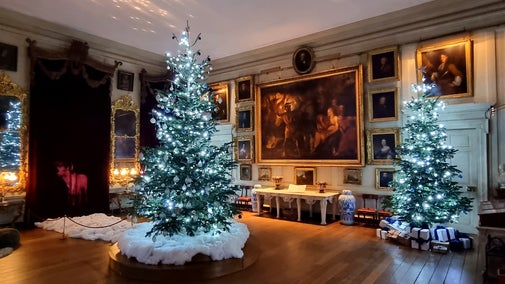
With plenty of space to run, jump and play there's lots to fun for families to have at Petworth, as well as activities for the school holidays.

Petworth is a two pawprint rated place. Find out about bringing your dog to Petworth to walk through the Deer Park or soak up the peace and beauty of the Pleasure Garden.

Keep up to date with everything going on at Petworth, from events and activities to exhibitions and guided walks.

Find out what you need to know about arranging a group visit to Petworth House and Park, West Sussex.

Find your way round the garden and park at Petworth with this downloadable map. See where to find the house, café, toilets, and which direction to take when setting off for a walk.

Our family map highlights some of the fantastic things you can enjoy in the grounds of Petworth. So, if you're looking for the perfect picnic spot, hoping to see some deer, or wondering what's the best hill to roll down, our family map has you covered.

17th-century house with one of the finest National Trust art collections, including works by Van Dyck, Turner and Gainsborough.
18th-century ‘Capability’ Brown designed garden. Serpentine paths, formal beds, a woodland walk, Ionic Rotunda and Doric Temple.
Explore the 700-acre park designed by ‘Capability’ Brown with views of the South Downs, fallow deer, woods and two lakes.
Mid-18th-century Servants’ Quarters, once home to 40 servants. Steam-powered technology was refitted in the kitchen after an 1872 fire.
Café in the Servants’ Quarters serving hot and cold drinks, lunches, cakes and snacks. Indoor and outdoor seating.
Servants' Quarters shop for gifts, home accessories and locally sourced products. Art shop for books and materials. Plant sales and garden accessories at our visitor car park.
Located in the Servants' Quarters, in the old Lower Servants Dining Room, the second-hand bookshop offers a wide range of books, including collectible titles.
A Christmas Enchantment at Petworth House is a dreamlike midwinter journey, inspired by the beauty of nature. With towering trees, celestial skies, roaming woodland creatures, and a special appearance from the mice of Brambly Hedge, each room glows with wonder. On Saturday 29 November and Saturday 20 December, visitors can experience the festive atmosphere of Petworth House after dark when the house will be open until 6.30pm, with sparkling lights and a courtyard choir. On Saturday 29 and Sunday 30 November there will be a Christmas makers market selling festive gifts. Normal admission applies, no booking required. Free entry for National Trust members. 29 November – 4 January (closed 24 and 25 December)

From the medieval interiors of the chapel to the rooms of the historic kitchens, find out what you can see on a visit to the house at Petworth.

Step into a Christmas Enchantment - a midwinter journey through Petworth House. Inspired by the Winter Solstice and the shifting rhythms of nature, the grand state rooms transform into a dreamlike world of overgrown wonder.

With plenty of space to run, jump and play there's lots to fun for families to have at Petworth, as well as activities for the school holidays.

Find out what to see in the garden at Petworth House. From the peaceful woodland walk to the impressive Doric Temple, there's much to take in during a stroll.
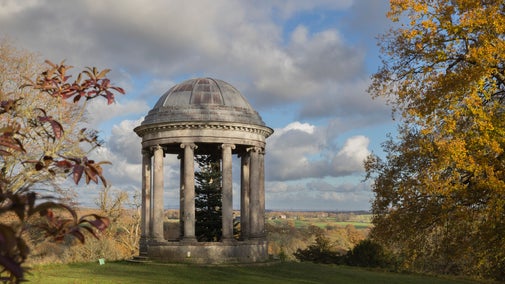
The ‘Capability’ Brown designed parkland at Petworth House has much to explore. Discover things to do and what to keep an eye out for when you visit.
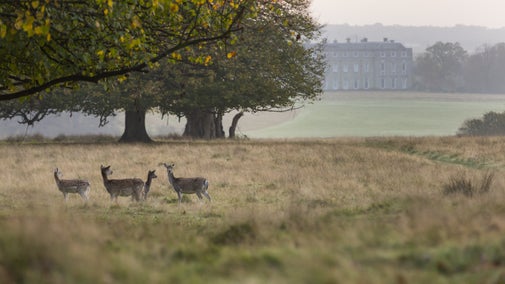
Discover more about the ancient trees that dominate the skyline of Petworth on this circular walk in Sussex.

Discover the views that inspired England's greatest landscape painter, JMW Turner, on this stroll around the park at Petworth.

A 1-mile (1.6km) circular stroll around Petworth's Pleasure Gardens that takes in the highlights of the naturalistic landscape created by Lancelot 'Capability' Brown.

Enjoy a 3-mile (4.8km) walk through the 700 acres (2.8sq km) of parkland through a landscape sculpted by Lancelot 'Capability' Brown, with ancient trees, fallow deer and views over the park to distant hills towards the South Downs.

Enjoy food and drink in the historic Audit Room Café. Shop for art inspired gifts, pick up a plant to take home or browse for the perfect pre-loved book.

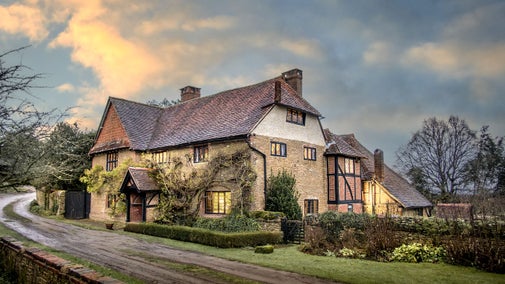
A charming country retreat on the edges of the South Downs.
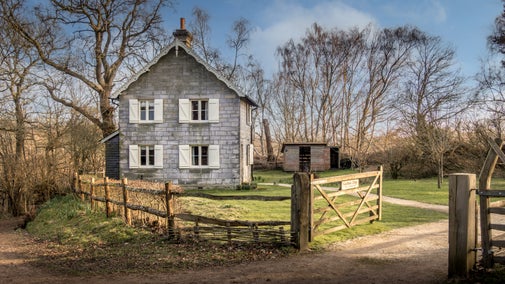
This gamekeeper’s cottage is surrounded by woodland on the Nymans estate.
Step into A Christmas Enchantment - a midwinter journey through Petworth House, where the longest night of the year stirs something ancient and magical.
Inspired by Baroque palaces of Europe, the 17th-century Petworth House displays one of the finest art collections in the care of the National Trust. See the state rooms featuring paintings and sculpture, including artwork by Van Dyck, Turner, Reynolds and Gainsborough.
Petworth House’s history has been created by one family over 900 years, with the collection highlighting a journey through history including the Gunpowder Plot and Napoleonic Wars. Collection highlights include the earliest English globe in existence, dating to 1592, and carvings by Grinling Gibbons.
The Servants’ Quarters, including the historic kitchens, show a glimpse into the life of the people who worked here.
Outside, the Pleasure Garden features formal borders, woodland walks, and architectural features, such as the Ionic Rotunda. The 700-acre Deer Park, which was transformed in the 1750s and early 1760s by the landscape architect Lancelot ‘Capability’ Brown, is home to ancient trees and fallow deer.
From Tudor monarchs to romantic painters, discover the rich history of Petworth House and Park. Follow its journey from medieval home to grand and inspirational mansion.

Petworth House and Park in West Sussex has been home to just one family for over 900 years. Discover their fascinating stories, from tales of execution to royal favour and epic house renovations.

Discover the relationship painter JMW Turner had with Petworth House and Park and explore its legacy.

Make a day of your visit to Petworth House and Park by visiting the historic market town too. Find out how the town and estate are linked.

Explore Petworth House room by room and discover the history of the site and some of the collection items on display with this downloadable tour.
From famous pieces of art and sculpture to decorative arts and furniture, explore some of the most important collections in the National Trust.

This copy of Geoffrey Chaucer’s famous work is one of the most important books in our care. Read the digital version.

Discover how the portraits of two ‘beauties’ are part of an exciting restoration project at Petworth House and Park.

Find out about volunteering at Petworth House and Park. With opportunities inside and outdoors, there’s a range of roles available helping to care for this special place.


Join today and help protect nature, beauty and history – for everyone, for ever. Enjoy access to more than 500 places with National Trust membership.
By sharing your email address you’re agreeing to receive marketing emails from the National Trust and confirm you’re 18 years old or over. Please see our for more information on how we look after your personal data.